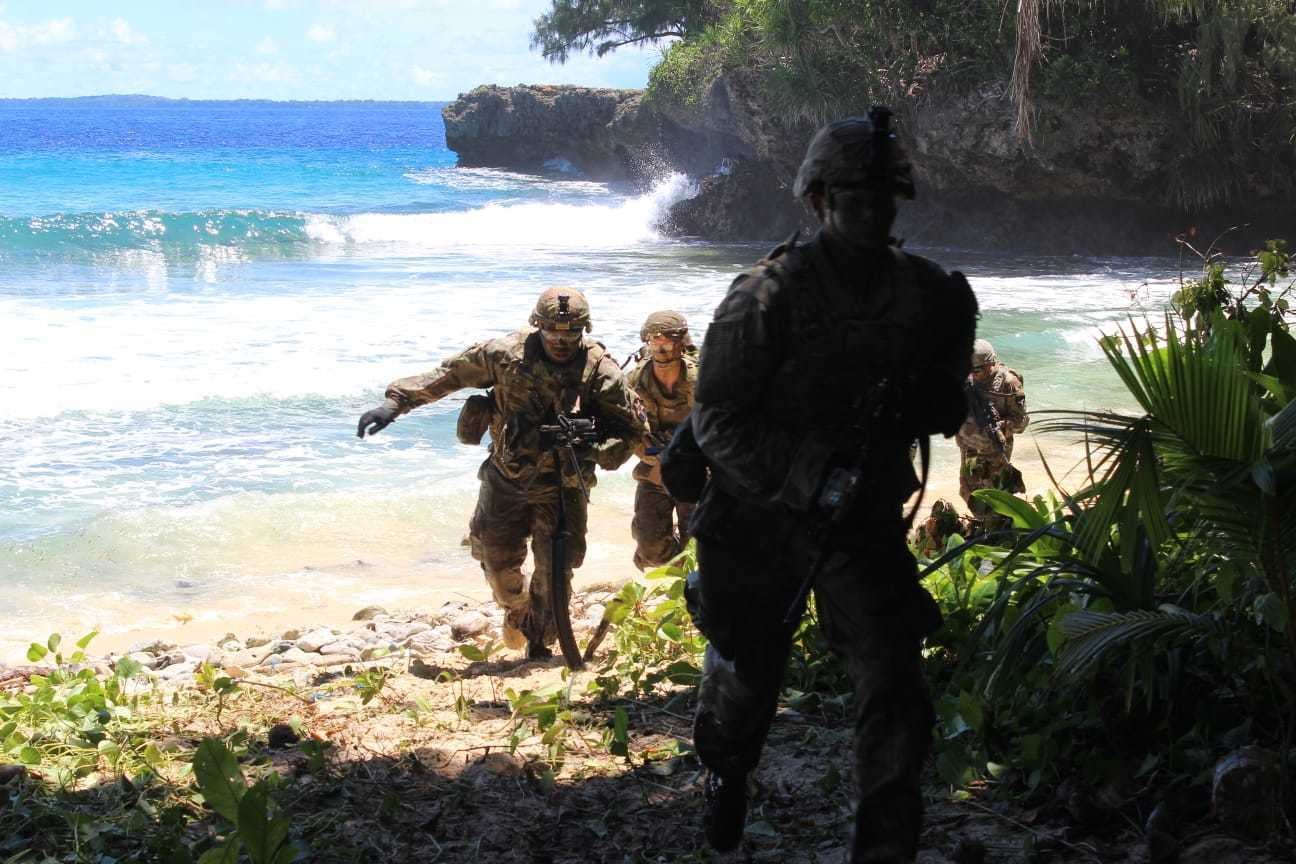WASHINGTON — The U.S. Army’s multidomain task force might have started out as an experimental unit, but a new plan to operationalize it puts the unit front and center in competition, crisis and conflict against adversaries.
The move is detailed in an Army whitepaper released March 23, in which the service acknowledges it must transform now to meet future challenges.
“Although our Army still maintains overmatch, it is fleeting,” the service wrote.
“By 2040, China and Russia will have weaponized all instruments of national power to undermine the collective wills of the United States, Allies and partners, while simultaneously cultivating their own security partnerships. This will lead to an unstructured international environment where the line between conflict and peace is blurred,” the whitepaper added. “As China and Russia continue to modernize their militaries, the Joint Force will find it increasingly difficult to deter their illicit and aggressive actions.”
The Army identifies China as the country that poses the “most enduring strategic challenge” and is likely to reach “military parity” with the U.S. military by 2040.
The first multidomain task force was stood up at Joint Base Lewis-McChord several years ago to participate in Indo-Pacific Command theater exercises to help inform the Army’s Multi-Domain Operations war-fighting concept as it evolves into doctrine.
This unit, which is aligned to U.S. Army Pacific, “represents the first of these units to bring multi-domain capabilities to combatant commanders,” the paper noted. “The MDTF’s All-Domain Operations Center, or ADOC, is currently under construction and will enable 24/7 oversight of adversary contact in all domains.”
The MDTF is expected to be the centerpiece of Project Convergence 2021, an annual campaign of learning that examines how the Army and the joint force will conduct multidomain operations.
RELATED

The Army has previously discussed plans to add a second MDTF assigned to the Pacific as well as another for Europe, and the service recently unveiled plans to have one located in the Arctic. But the whitepaper makes it clear the Army wants to build five of these units, with one that is “aligned for global response,” the paper stated.
The document also noted the MDTF in the Arctic will be tailored to deal with “multiple threats.”
“MDTFs represent agile development embodied in an organization,” the paper stated. While the conventional force generation mans, trains and equips organizations and then provides them to combatant commanders, “MDTFs break this mold.”
“Each MDTF will be designed and tailored to operate at the required echelon in order to meet the needs of the supported Joint Force commander,” the paper read. “From inception, each MDTF will be assigned or aligned to a Combatant Command, then built, trained, and exercised within the context of the Combatant Commander’s requirements.”
The units will be scalable from operational to the strategic theater level. The hope is this design will result in more capable forces to operate in areas where access is denied by the opposing force.
The MDTFs will also serve as an “organizational centerpiece for modernization,” according to the document, because they will “accelerate change through experimentation and testing during all-domain maneuver.” They are also expected to help develop new ways to fight and will inform the Joint All-Domain Operations architecture and strategy.
The units, acting as theater-level maneuver elements, will “synchronize precision effects and precision fires in all domains against adversary [anti-access, area denial] networks in all domains, enabling joint forces to execute their [operational plan]-directed roles,” the paper described.
The Army’s war-fighting concept identifies multidomain operational phases as competition, crisis and conflict, and the paper put the MDTF’s roles front and center in managing these phases.
In the competition phase, which is below the level of conflict, the Army plans to maintain forward presence while building and maintaining relationships with allies and partners around the world.
MDTFs would serve as the tool to “gain and maintain contact with our adversaries to support the rapid transition to crisis or conflict,” according to the paper. “With requisite authorities, maneuver in all domains allows MDTFs to identify and secure positions of relative advantage from which they deny, delay, degrade, and disrupt the adversary.”
In the crisis phase, the Army would hold adversaries’ interests at risk and impose costs on their actions. MDTFs would play a critical role in deescalating crises and bring them back to competition “on favorable terms” by “delivering non-kinetic and kinetic maneuver to demonstrate friendly resolve, impose costs and alter behaviors,” the paper explained.
MDTFs would “neutralize” adversarial networks used to deny territorial access in order to give the joint force the ability to maneuver by employing “synchronized combinations of non-kinetic and kinetic effects to disrupt, defeat and destroy A2/AD capabilities,” according to the document.
A plan for how the Army will operate in the competition phase of Multi-Domain Operations is expected to be released shortly, Army Chief Gen. James McConville said last week at the Association of the U.S. Army’s Global Force virtual conference.
Jen Judson is an award-winning journalist covering land warfare for Defense News. She has also worked for Politico and Inside Defense. She holds a Master of Science degree in journalism from Boston University and a Bachelor of Arts degree from Kenyon College.






